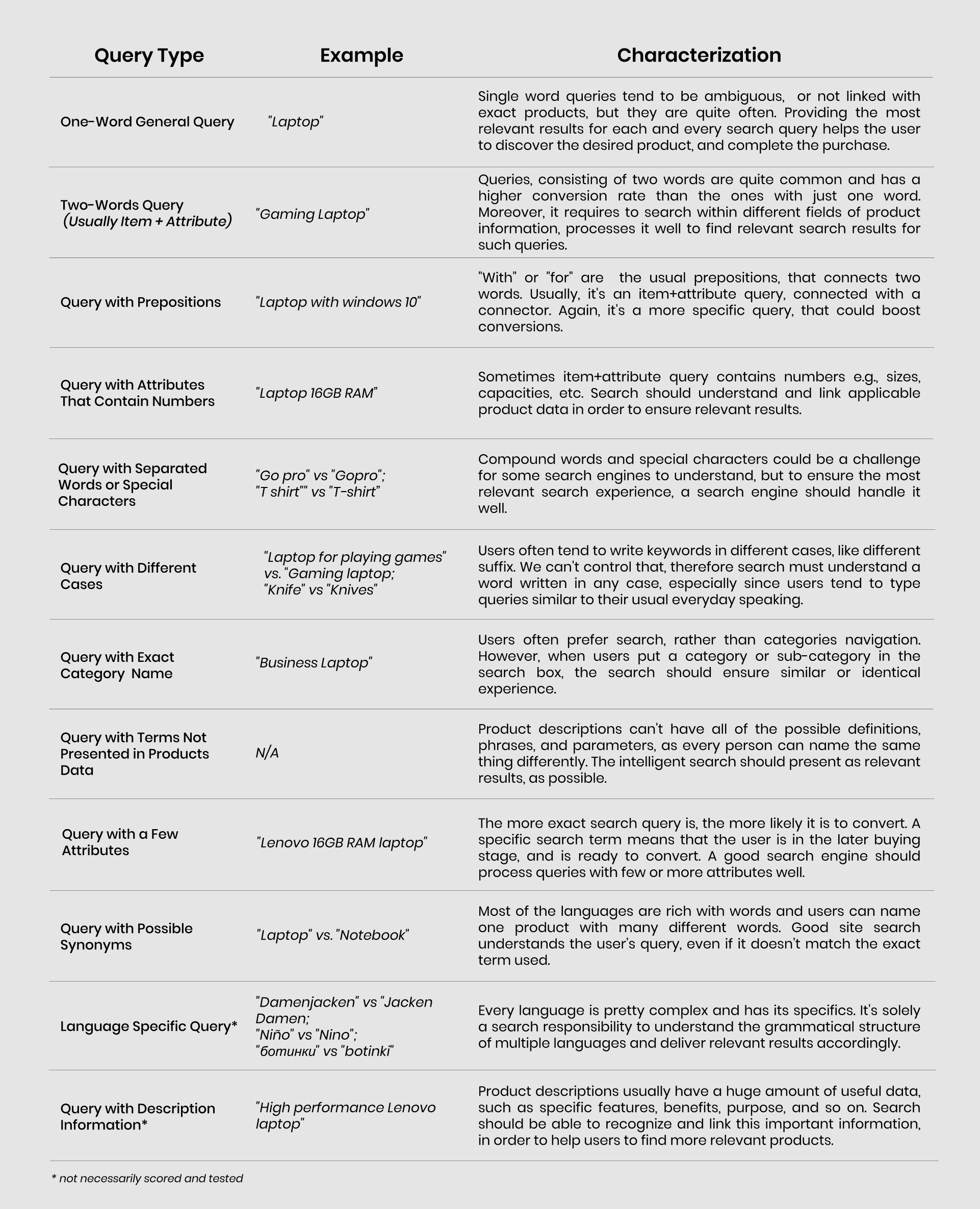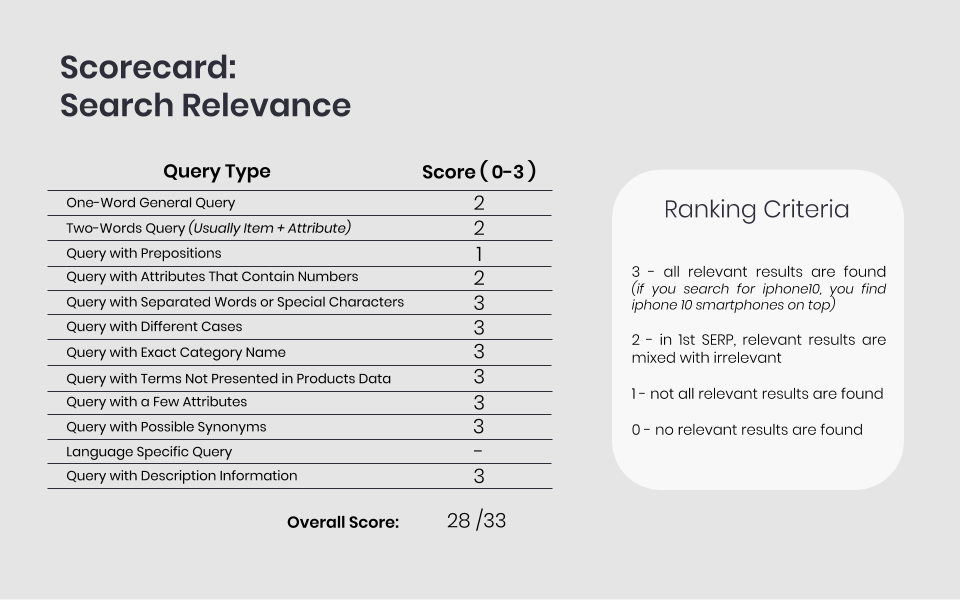The Framework of the Perfect eCommerce Search: Case of Amazon
Everybody wants it – the perfect eCommerce search. The magical search box, serving as a gate for your store visitors. It seems so simple: search has that one job – to find what users are looking for.
Users come, type, the search returns relevant results in a blink of an eye, users browse, click, and buy. That’s it! Users are happy, you are happy, the search is happy. Everybody is happy.
However, in reality, it’s not that simple. Search doesn’t always understand users, and they don’t always understand the logic behind the search engine. In this case, users get frustrated very fast, they simply leave and go to your competitor. That’s a loss that none of the eCommerce stores can afford.
In fact, based on eConsultancy, up to a third of all websites visitors will use search, and they are the most important ones for you. They are not just shopping – they are shopping with intent, and their conversion rates tend to be 50% higher (eConsultancy). Thus, it’s kind of obvious that well-developed eCommerce search could result in a tremendous increase in your revenues.
As important as search is, many eCommerce sites still can not get it right. Based on the research made by Baymard Institute, 60% of top 50 eCommerce sites do not support even such simple functionality as symbols and abbreviations (inch vs. “ or in.)! And here we are talking about huge companies, which can afford to invest a lot into their search, and they still can not figure it out.
So does the recipe for a perfect eCommerce search exist?
SearchNode eCommerce Search Analysis Framework
We decided to put all of the knowledge and experience we have into creating an eCommerce Search Analysis Framework. Before we begin to dig deep into the framework itself, we just want to note that the criteria were created thinking from the users’ perspective. We understand that certain features can be adjusted, based on various researches, tests, and business rules. It’s perfectly normal, as every industry has its specifics, and every eCommerce search is different. Therefore, these are the features that we believe good eCommerce search should have, in order to create a brilliant search experience for users.
Our framework consists of three main pillars, vital for any search:
Each of these pillars consists of many smaller details, altering the overall picture. Bellow, we unravel each of them. Also, to make it easier and more entertaining to read, we present it through the analysis of Amazon.com search. Enjoy!
1. Search Relevance
This is as simple as it can get: if your users cannot find what they are looking for, they leave. Imagine that you go to the electronics store and ask an assistant to show you where the iPhones are, and then he walks you not to the phones, but to the iPhones’ accessories. You would feel frustrated, wouldn’t you? Well, that’s exactly how your customers feel when they type “iPhone 10”, and the search returns irrelevant results, like accessories on top.
The main user benefit of each factor included in the Search Relevance pillar is fast and accurate product discovery. If the search engine is able to understand the query that the user typed and provide purely relevant results, the user will feel satisfied.
In order to examine this pillar, we analyze 12 different queries types and check the relevance of the results they generate. Each of the 12 query types can score from 3 to 0 points, assuming that 3 means that all of the results in the SERP are relevant, and 0, that no relevant results are found. In order to make results significant, each of the query types needs to be checked with at least 20 different cases.
Amazon Search Relevance: 85 %
Amazon scored pretty high in Search Relevance, and this is nothing surprising. In fact, some believe that outstandingly relevant search is exactly where the success of Amazon lies. We presented the scores that Amazon.com search received in the table below.
As you can see, we only find some minor issues which we analyzed below. Please note, that in this article we only discuss and point out the challenges we found. We do not cover parts of Amazon.com search which received the highest possible score, as they are working well and do not require broad investigation.
Amazon Challenges with One-Word General Queries
Single-word queries tend to be ambiguous, not specific, or not linked with exact products. Therefore it might be a challenge for the search to find relevant products. Providing the most relevant results for each and every search query helps the user to discover the desired product and complete their purchase. In the case of Amazon, most of these simple searches work flawlessly, but not all. For instance, when looking for “shirts” , search also returns results for t-shirts and blouses.
In situations like this, most probably search relevance is influenced by Sponsored Products ads, not by the logic of the search engine. Regardless, results here are a bit confusing.
Amazon Challenges with Two-Words Queries ( Item + Attribute )
Queries, consisting of two words, are quite common and has a higher conversion rate than the ones with just one word. Moreover, it requires to search within different fields of product information and processes it well in order to find relevant search results. In most of the cases, Amazon.com search also works without any faults, but there are some exceptions. For example, when searching for “pink smartphone” in the 1st SERP, not all displayed results are relevant. We also get listed such results as pink phone accessories, blue headphones, and black smartphones.
Amazon Challenges with Queries With Prepositions
“With” or “for” are the usual prepositions, that connects two words. Usually, it’s an item+attribute query, linked with a connector. Again, it’s a more specific query, that could boost conversions. We found some issues with Amazon search here as well. For example, if we try to search “aftershave with ginger”, we get many irrelevant results on top, such as body lotions with ginger for women, various aftershave products without ginger, face lotions with sunscreen, perfume, and etc.
One more interesting thing is that if we go to the second page of results, we start seeing totally irrelevant products such as yoga pants and t-shirts.
Amazon Challenges with Queries with Attributes That Contain Numbers
Often item+attribute searches are supplemented with numbers, e.g., size, capacity, etc. To ensure relevant search results, they should be handled by search well. Amazon has some room for improvement here as well. Let’s look at the example. Search query “16gb ram laptop” returns not only laptops with this exact capability, but also laptops with different RAM capacities, and RAMs itself.
2. Search Features
This pillar indicates how well some of the crucial search features work. It requires diving deeper into the search. We could think of queries and results pages as the skin of the search, and these features as the bones. We check the general logic and behaviors of filters, spellcheck, product recommendations, speed, and many other important factors.
Amazon Search Features: 86 %
Based on our analysis, the features of Amazon search is almost impeccable: filters are structured well and are relevant, spellcheck works perfectly, autocomplete suggests relevant results, they have product recommendations and autocomplete updates results without any delays.

Wondering how you would score? Request your personalized eCommerce on-site search grade and analysis HERE.
As scorecard states, we found just one issue in Amazon.com search, which related to search relevance after sorting results, and we present it in the following section. Other search features are implemented really well, so we won’t go in details there.
Not Relevant Results After Sorting
The results sorting option should be a helping hand for users to discover their desired products effortlessly, not the other way around. “Smartphone” query sorted by lowest price should display the cheapest smartphones on top, not accessories. It also shouldn’t reduce the number of all available products just like in the Amazon case. If we try to search for “smartphone”, we get a total of 60,000 results, but when we use a sorting option and sort it by the lowest price, only 12 results remain visible.
3. Search Interface
The search interface is made out of many minor details, which although seems so little, can make or break your conversion rate. This pillar summarizes how well the user interface is designed and how it feels for the users. We analyze autocomplete, filters, search box, SERP, and design responsiveness to mobile devices.
Amazon Search Interface: 71 %
In this pillar, Amazon.com search scored the least as we were not able to find some of the features which we think is highly important for any eCommerce search.
In the following chapter, we analyze the features from our list, which we couldn’t find in Amazon search. All of the other features work perfectly and don’t require any further analysis.
Autocomplete Doesn’t Suggest Products with Visuals & Doesn’t Show Previous Search Queries
Autocomplete product suggestions should be displayed with big enough images and other valuable information like price, labels, CTA, etc., as it helps streamline the users’ search experience. Another great practice for autocomplete is displaying previously searched queries in suggested results. It provides an option for users to go back and redefine their search. Amazon does neither of that.
Filters Don’t Have Count
Showing how much product every filter has helps customer to get a broader picture of what he/she can expect from the products catalog. In the Amazon case, the user is left in darkness.
Page Reloads When Filtering, Results Update Slowly
Usually, users sort out the results using more than one filter, so it gets very frustrating when after selecting one filter, the whole page reloads. Also, if results updates slowly, it gets even more frustrating, and a user may leave the page instantly. Somehow Amazon delivers this frustrating experience.
The Conclusion
Today we tried to build a framework of how the perfect eCommerce search should look like, and to understand, does it really exist. From the analysis we conducted on Amazon.com search, it is pretty clear that even the biggest industry player still has room for improvement.
We at SearchNode really admire Amazon search team and the amazing work that they are doing. There are no doubts that they are the flagship example for everyone working in the eCommerce search industry, including us.
This analysis framework is the presentation of our understanding of how the perfect eCommerce search should look like, which is formed from our experience working with hundreds of various eCommerce companies over the years.
The challenges we found in Amazon.com search could be temporary bugs, or more likely, just the way how it works for Amazon. Like we said, our framework is created purely having user experience in mind, not the specific business rules and requirements. Don’t get us wrong – we do not try to question Amazon.com search team authority.
Likewise, if you’d like us to analyze your eCommerce site search, as we did for Amazon.com, feel free to sign up for it. Just keep in mind, that spots for this are limited since it requires our search experts team to dedicate their time. You can register HERE.
To wrap things up, there is no panacea which could cure each and every eCommerce search in the world. The key to successful eCommerce search is continuous search improvements based on data analysis, not just features alone.
P.S. You can access the full Amazon.com search analysis HERE anytime.









